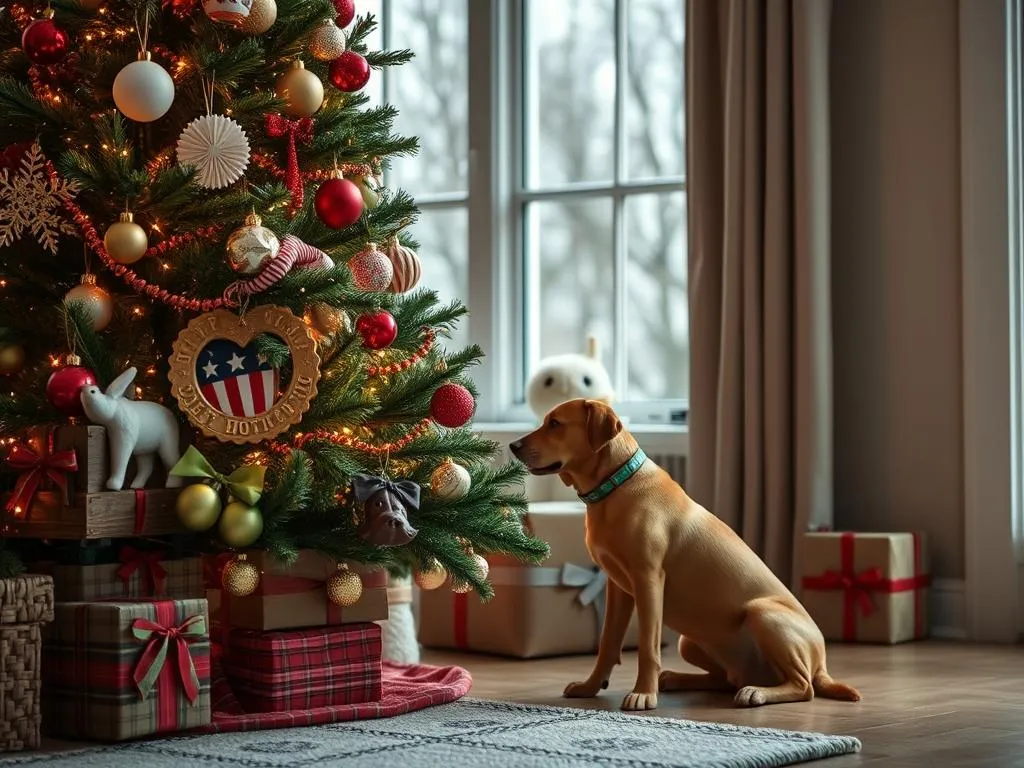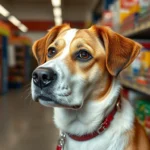
Introduction
The holiday season is a time of joy, celebration, and cherished traditions, with decorating a Christmas tree being one of the most beloved activities. However, for dog owners, this joyous occasion comes with a unique set of challenges. Ensuring the safety of our furry friends while creating a festive atmosphere is crucial, especially when it comes to the Christmas tree. In this article, we’ll explore how to dog proof Christmas tree setups, making sure your four-legged family members can enjoy the holidays without any hazards.
From understanding the potential risks to practical tips on decorating and training, we will cover everything you need to know to keep your dog safe around the Christmas tree. By the end of this article, you’ll be equipped with the knowledge and strategies to create a festive environment that prioritizes the well-being of your pets.
Understanding the Risks
Common Hazards for Dogs
Before we can effectively dog-proof our Christmas trees, it’s essential to recognize the common hazards associated with them. Many decorations, such as glass ornaments and tinsel, can pose significant risks. Glass ornaments can break easily, creating sharp shards that may injure curious pups. Tinsel can also be dangerous; if ingested, it can lead to severe gastrointestinal issues.
Additionally, the water in the tree stand can be a hidden danger. Often treated with fertilizers and other chemicals, this water can harbor bacteria that can make your dog sick if ingested. Moreover, ornaments and lights can present choking hazards, especially for smaller breeds or puppies who may be prone to chewing on anything they find.
Behavioral Considerations
Understanding your dog’s behavior is also vital in ensuring a safe environment. Dogs are naturally curious creatures, and their instincts may lead them to explore the Christmas tree, especially if it’s adorned with shiny decorations. Jumping, chewing, and even pawing at the tree can create accidents. Different breeds and ages may also influence their interactions with the tree; for instance, younger dogs may be more prone to playful antics, while older dogs might be more cautious.
Choosing the Right Location for Your Christmas Tree
Ideal Placement
Selecting the right location for your Christmas tree can significantly reduce the likelihood of accidents. Ideally, place the tree in a room where your dog doesn’t spend as much time or in a corner that minimizes access. Consider the layout of your furniture; positioning the tree away from furniture that your dog can use to jump onto the tree can help deter them.
Securing the Tree Stand
A stable tree stand is essential for preventing the tree from toppling over. Look for stands that provide added security, such as those with a wider base or those designed specifically to hold larger trees. Some stands come with locking mechanisms or adjustable screws that can secure the tree more firmly.
Dog-Proofing Your Christmas Tree
Safe Decorations
When decorating your tree, opt for pet-friendly decoration options. Instead of glass ornaments, consider using wooden or fabric ornaments that are less likely to break and create hazards. You can also use ribbons made from natural fibers, which are safer if chewed on compared to synthetic materials.
Tree Barriers
Creating physical barriers around the tree can effectively keep your dog at a safe distance. Baby gates or playpens can be decorative and functional, providing a designated area that prevents access to the tree. If you want to maintain an open look, consider using decorative fencing that matches your holiday decor to create a safe perimeter around the tree.
Anchoring the Tree
To further prevent accidents, consider techniques for securing the tree. You can anchor the tree to a wall using a tether or weights at the base to add stability. This is especially important if you have a particularly curious or energetic dog. By ensuring that the tree is secure, you can enjoy the holiday season without the constant worry of it being knocked over.
Training Your Dog
Basic Commands
Training your dog to obey basic commands can significantly help in managing their behavior around the Christmas tree. Commands like “leave it” and “stay” are invaluable during the festive season. Start by teaching these commands in a distraction-free environment, gradually introducing the Christmas tree as a point of focus.
- Leave It: Hold a treat in your hand and let your dog sniff it. Close your hand and say “leave it.” Once they back away, reward them with a different treat.
- Stay: With your dog in a sitting position, show them a treat and say “stay.” Take a few steps back, and if they remain in place, reward them with the treat. Gradually increase the distance and duration.
Positive Reinforcement
Positive reinforcement is an effective training method that encourages good behavior. Whenever your dog exhibits calm behavior around the Christmas tree, reward them with treats or praise. Additionally, providing distractions, such as engaging toys or chew items, can help keep your dog occupied and less interested in the tree.
Monitoring and Supervision
Keeping an Eye on Your Dog
Even with all the precautions in place, it’s vital to maintain supervision when the tree is decorated. Regularly check in on your dog’s behavior around the tree, especially during the first few days after decorating. This vigilance can help you catch any unwanted behavior before it escalates into a dangerous situation.
Creating a Safe Space
Designating a comfortable area for your dog away from the tree can provide them with a sense of security. Ensure this space is equipped with their favorite toys, blankets, and a cozy bed. This can help them feel relaxed and reduce their interest in the tree while still allowing them to be part of the holiday festivities.
Alternatives to Traditional Christmas Trees
Dog-Friendly Tree Options
If you find that dog-proofing a traditional Christmas tree is too challenging, consider alternative options. Wall-mounted trees can be an innovative solution, allowing you to display decorations without the risk of a toppled tree. Pet-safe artificial trees are also available, designed to withstand the curiosity of dogs without causing harm.
DIY Projects
For the crafty pet owner, simple DIY projects can provide unique and pet-safe holiday decorations. Create a festive tree alternative using household items such as cardboard or fabric. For example, you can cut out a tree shape from cardboard and decorate it with non-toxic paint or fabric scraps. This way, you can enjoy the holiday spirit without the risks associated with a traditional tree.
Conclusion
The holiday season should be a time of joy and celebration, not worry and stress. By following the tips outlined in this guide on how to dog proof Christmas tree setups, you can create a festive atmosphere that is safe for your furry friends. From understanding the risks and choosing the right location to dog-proofing strategies and training techniques, proactive measures can help ensure a delightful holiday for both you and your pets.
Remember that every dog is different, and what works for one may not work for another. Tailor your approach based on your dog’s behavior and personality, and remain vigilant throughout the season. By prioritizing safety, you can enjoy the beauty of your Christmas tree without compromising your dog’s well-being.
As the holidays approach, take the time to implement these strategies, and share your own tips and experiences with fellow pet owners. Together, we can create a safe and joyous holiday season for all!









